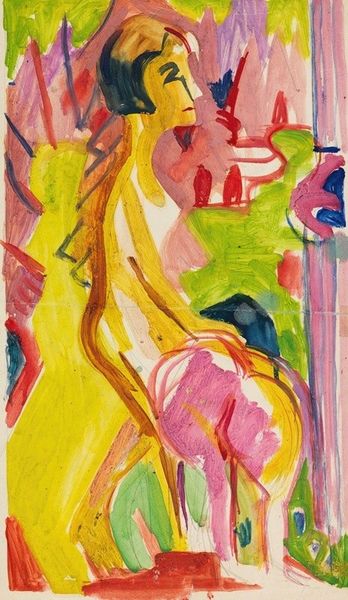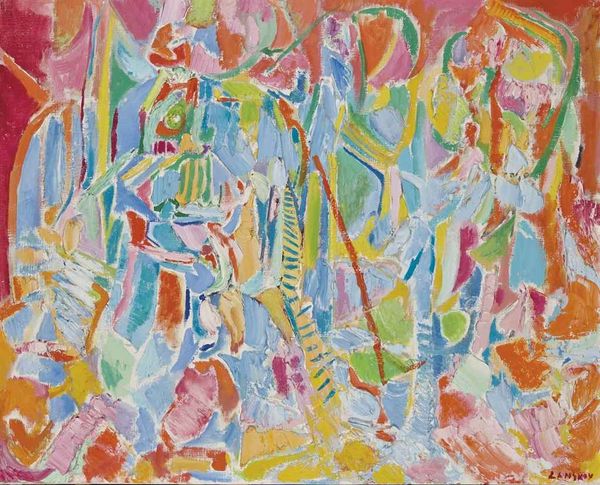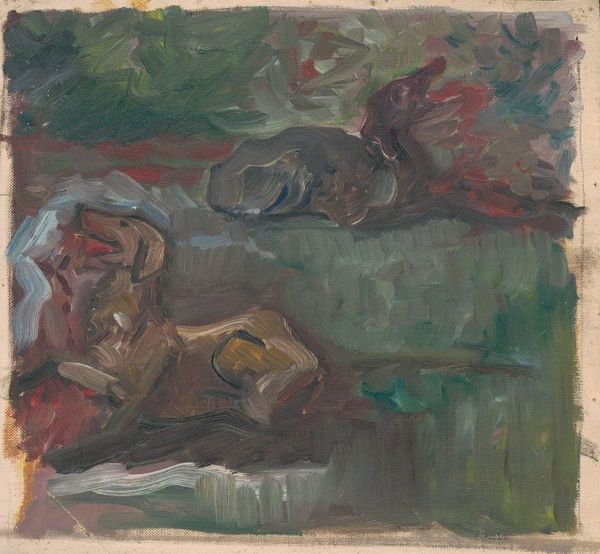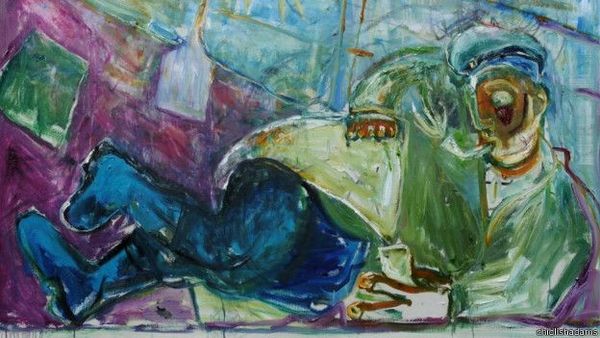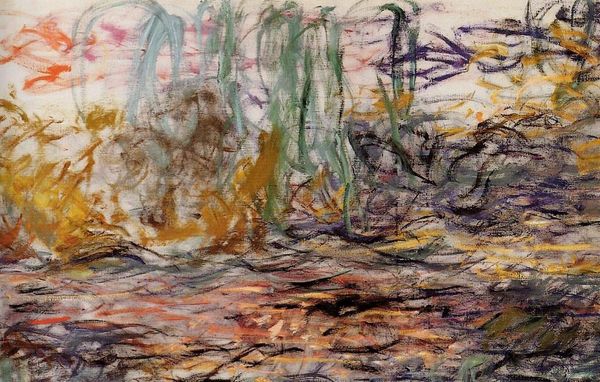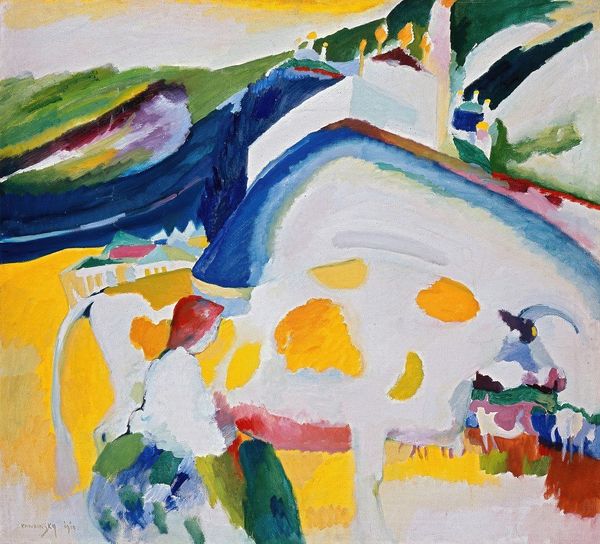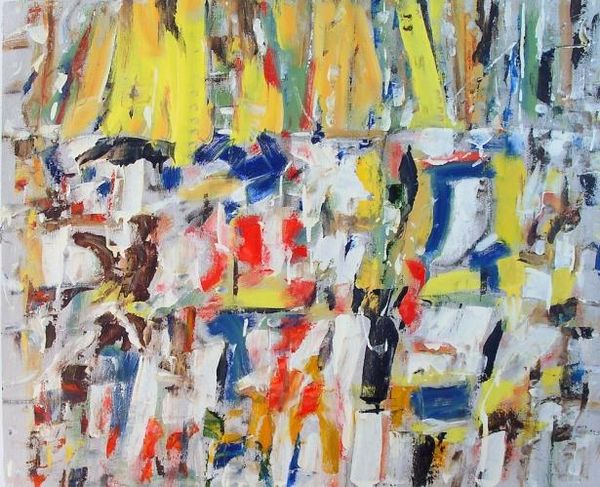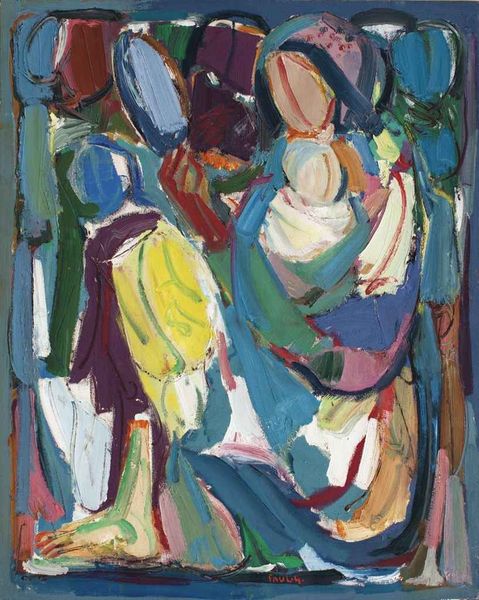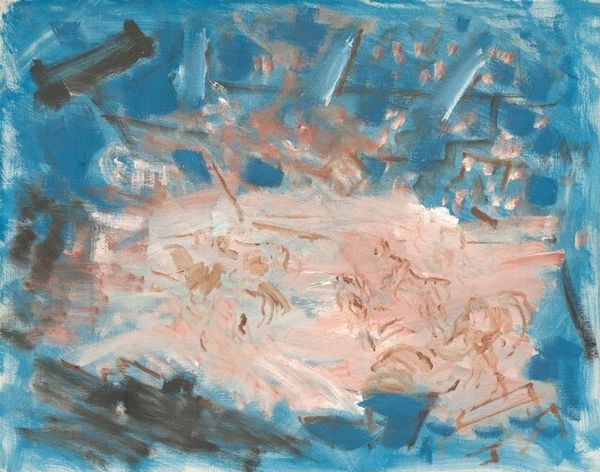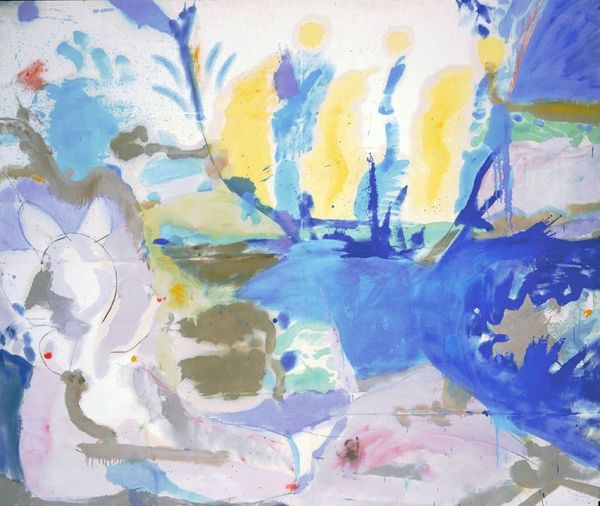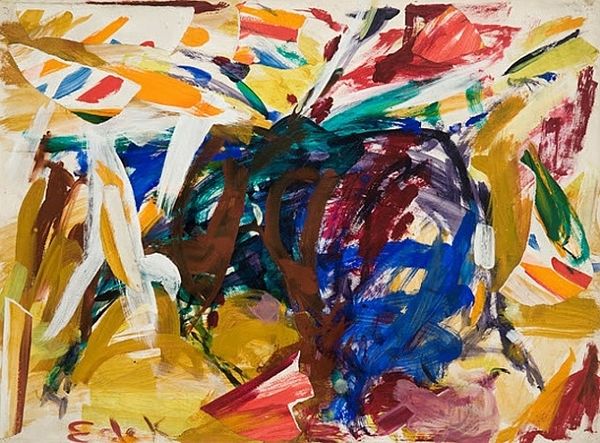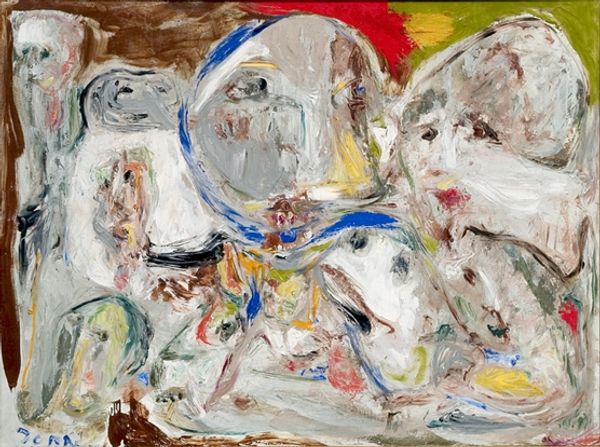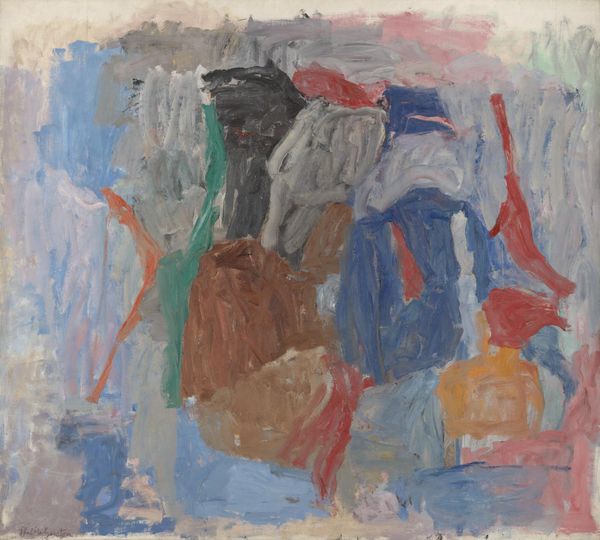
Copyright: Arthur Pinajian,Fair Use
Editor: This is Arthur Pinajian’s "Untitled Landscape, Bellport (No. 0001)," created in 1985 using acrylic paint. The thick impasto layers give the canvas such a tangible, almost sculptural quality. It feels vibrant, almost frenetic to me, but I struggle to see much that reminds me of a landscape. What do you see in this piece? Curator: The lack of conventional recognition *is* the point, I think. We need to consider how art institutions at the time grappled with representation and abstraction, and how that played into the perception of landscapes in particular. The mid-80s witnessed a questioning of established artistic hierarchies, so an abstract landscape challenged the conventional expectations around the genre. Does it *need* to represent trees and grass to evoke a sense of place? Editor: So, you are saying that challenging those visual conventions was part of a broader movement within the art world? Curator: Exactly. Pinajian, seemingly isolated during his lifetime, ironically taps into larger post-impressionist explorations, such as fauvism, through that vivid palette and impulsive brushstrokes. His rejection of realistic portrayal becomes a statement itself. Is this Bellport, as in Long Island? Or somewhere else entirely, filtered through the artist's internal vision? How might the public role of painting landscapes been challenged by a painting like this at the time? Editor: I suppose it disrupts expectations by prompting the viewer to actively participate in constructing the scene, rather than passively receiving it. Curator: Precisely! The artwork challenges viewers' ingrained expectations of the landscape genre. It emphasizes the political and societal influence of art in a more ambiguous yet effective way, particularly during the Post-Impressionist transition into modern art! Editor: This makes me see the piece not just as a landscape, but as a cultural statement! Curator: And considering its re-emergence into the public eye much later in Pinajian's career, it invites consideration about art historical canons themselves. Food for thought.
Comments
No comments
Be the first to comment and join the conversation on the ultimate creative platform.
